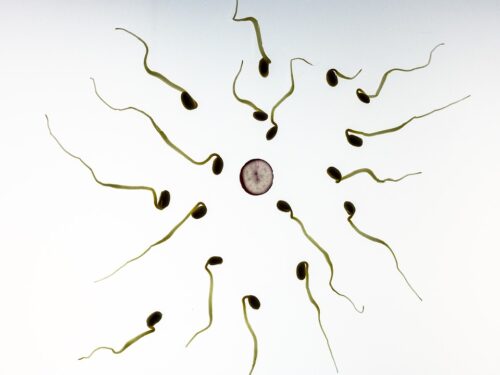Image Courtesy of TBIT
It may seem like women will forever be plagued with the unfair burden of popping pills to decrease the odds of an unwanted pregnancy. However, researchers at the Yale School of Medicine are currently looking into the molecular processes that could either rev or halt the engines involved in sperm motility, and how those mechanisms could be altered to possibly create a method of birth control for men.
Jae Yeon Hwang, associate research scientist from Dr. Jean-Ju Chung’s lab at the Yale School of Medicine, is currently carrying out research regarding male germ cells. “In a birth process, the major two factors which can achieve new life are the sperm and egg,” he said. “After sperm cells are inseminated into the female reproductive tract, they simply migrate to meet the egg and penetrate it.”
However, there is more to the story. After insemination into the female reproductive tract, sperm cells begin their journey to the egg and are met with diverse female reproductive tract environmental factors. During this journey, sperm cells obtain fertilizing abilities – referred to as capacitation. This biological process triggers these cells to develop a unique motility pattern called hyperactivated motility, characterized by the beating of the flagellum, the tail on the end of the sperm, in high amplitudes. “Hyperactivated motility is triggered by an calcium influx,” Hwang said.
While researchers knew that calcium was essential for the development of hyperactivated motility, they did not know how, specifically, the CatSper channel arranged itself on the sperm tail. It was the work of this lab that built upon knowledge of the previously discovered CatSper channel to understand how it is arranged on the sperm tail. When functional, CatSper allows for crucial calcium influx into sperm cells, which results in hyperactivated motility. However, if the CatSper channel is deficient, calcium cannot enter sperm cells, which means that hyperactivated motility cannot be triggered. This phenomenon results in male infertility.
Hwang’s work comes into play because the goal of his study was to understand how the CatSper channel is linearly arranged along the sperm tail. Without CatSperτ, a protein found on the membrane of sperm cells, Hwang found that the linear arrangement of the CatSper channel fails to occur, thus impairing sperm hyperactivated motility and resulting in male infertility.
With the accomplishment of valuable research comes great moments of pride. Hwang mentioned that while learning from Cell Reports that they were going to publish his work was enough to make him incredibly proud, what made him even happier was reading the peer reviewers’ comments on his paper describing how much they enjoyed reading his study. Realizing other experts in his field valued the work he was doing, Hwang felt a sense of pure fulfillment.
At the end of the day, this work has important implications. Hwang said that a new method of male contraception could theoretically be possible if they could block the CatSper channel and associated proteins. Conversely, he also added that if someone is having issues with fertility, the problem can be approached using knowledge of the CatSperτ-CatSper relationship.
Looking into the future, with the help of the scientific progress made by Hwang and his colleagues, we are getting closer and closer to tremendous possibilities regarding the manipulation of male germ cells.

